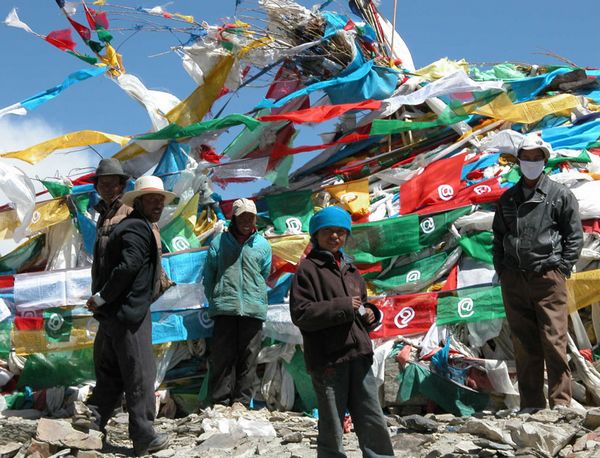
Local Tibetan people help Zhai Yuefei draw the sign “@" on the sutra streamers in hope for "sending message" to the Buddha. [Photo/ China Tibet Online]
In the cyber age, people resort to computer to send messages to their friends far or near. In Tibetan areas, the pilgrims write their prayers and wishes on the Mani stones and pile them up as they believe that their wishes can be delivered to the Buddha via natural phenomena like wind, rain and thunder.
Seemingly, there is no relationship between the two; however, from the artistic view, anything is possible.
The Mani stones piled in a variety of shapes with different words or images of worship are most frequently encountered in Tibet. As an indispensable part of Tibetan people's religious life, stacking up Mani stones is a ritual for believers expressing their adorations and wishes to the Buddha.
Like Mani stones, the sign "@", a proverbial symbol of Internet, usually refers to information, efficiency as well as sending messages.
As far as I know, no one has ever acted out to relate the purely religious sign with "@", until the Chinese painter Zhai Yuefei performed it in Tibet.
On May 26, 2006, Zhai Yuefei entered Tibet again, where he had lived for 15 years, to carry out an art performance he had brewed for long. During his trip, he drew innumerable "@"signs on the Mani stones and sutra streamers in white with pigments made from Zanba.
"In the network age, ‘@' means delivering information in the quickest way. I think the power of ‘@'could help people deliver their wishes written on the Mani stones to the Buddha quicker, " Zhai Yuefei explainted.
"The sign "@" were soon taken away by the wind, looking like all the good wishes have been received by the Buddha," he added.
